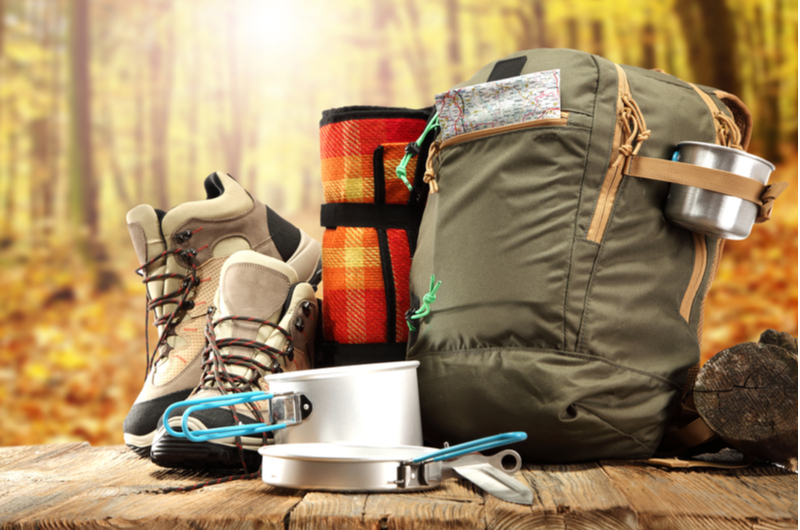Camping Gear: Make Your Outdoor Vacation More Comfortable
Camping is a pastime that everyone can enjoy or, conversely, learn to hate if not properly prepared. From novice to expert camper, it is key to make the equivalent of a Flight Check List to ensure the camping trip is, first and foremost, comfortable.
While camping is intended to be rugged, it will not be much of a vacation if being in the elements causes more stress than ease. The stuff of urban legends about wicked rashes, bug bites, stiff bodies from poor sleep, or going hungry because cooking outdoors was an unnecessary challenge, can be avoided with a little forethought and research. They can be completely eliminated by following simple tips and buying the right gear.
Knowing Where to Go and Knowing About Where You Are Going
When considering a camping trip, it is important to do a little research about the environment you would like to stay in. It used to be that considerations for a camping trip were:
-
Does the location have access to water, or will you have to bring your own?
-
Is the terrain mostly level or will the campsite have to set up on an incline?
-
How enmeshed in wildlife will the campsite be?
But now whether or not a cell phone signal or internet access is available to wherever the campsite ultimately will be is critical. To ascertain the information you need for the campsite preliminaries, research via the location’s website if one is available, or if reservations are required – they are certainly recommended –make a telephone inquiry as to any features of the camping area that is important. This way you can prepare accordingly.
A simple thing like checking the weather forecast in that area for the duration of the camping trip, and how the potential camping ground reacts to weather is unbelievably helpful. For instance, “is the campsite subjected to flash floods” is a very useful piece of information to be armed with when making a decision about a campsite.
Make a List and Check it More than Once
It is important to know what you want to take to a camping trip, but just as important to know why you want certain items. The first list may include the following:
- Comfort
- Shelter
- Convenience
- Physical exercise
- Budget friendly gear
Tarps and Tents
A tent is the mainstay equipment that most associate with a camping trip. It is also the piece of equipment that satisfies almost all of the criteria on the list of requirements for a great outdoor vacation experience. It provides comfort, shelter, convenience and is a budget-friendly piece of equipment.
Depending on how simple or rugged you want to make the camping trip experience, a tent can be anything from a tarp draped over a line to a more complicated affair with cables, poles and spikes. When deciding what gear you will need, keep in mind how far you will have to haul it, and how much time you want to spend setting it up. Once you decide on what you are looking for, narrow the choice down to price selection.
Tarps are multi-utilitarian, in that they can serve as totes, hammocks, extra weatherproofing and insulation or ground cover. They can be the tent itself. You can find camping tarps through many vendors, but some of the best are made by REI.
Tents offer an enormous choice. Tents made by Coleman dominate the list of contenders, and they make tents in all price ranges. The tents are lightweight and weatherproof that set up in minutes, so you can get on to the business of the great outdoors.
As for any other kind of camping equipment, Coleman makes that too. They include:
On Foot
Just like a tent, you want the shoes you wear to be comfortable, lightweight and, if not, weatherproof, at least breathable. Camping may entail more physical exercise than even the most fit camper anticipates. It may require moving up and down terrain different than you are accustomed to, especially while hauling camping gear.
A good pair of shoes is as important to the enjoyment of a camping trip as a comfy sleeping bag. They minimize aches and pains and allow you to literally weather your environment. Shoes that serve both as hiking and river shoes are a consideration. Some good examples include:
- Teva Ember Moc: This is a lightweight shoe that offers support for hiking and is suitable for water. It is a hybrid of sport shoe and slipper. It is durable, functional and comfortable.
- Teva Terra Float: This is referred to as a knit sandal. It has both the elements of a shoe and a sandal, and is perfect for all modes of terrain.
- Crocs: These are not just every day shoes. Crocs is one of the leaders when it comes to outdoor, multi-environment footwear. Their product is a mesh sandal with durable support that can take on any hiking, while perfect for the water as well.
Most athletic brand tennis shoes make respectable hiking boots. If you opt to wear traditional camping shoes, it is recommended that you also pack one of these water/hiker hybrids.
